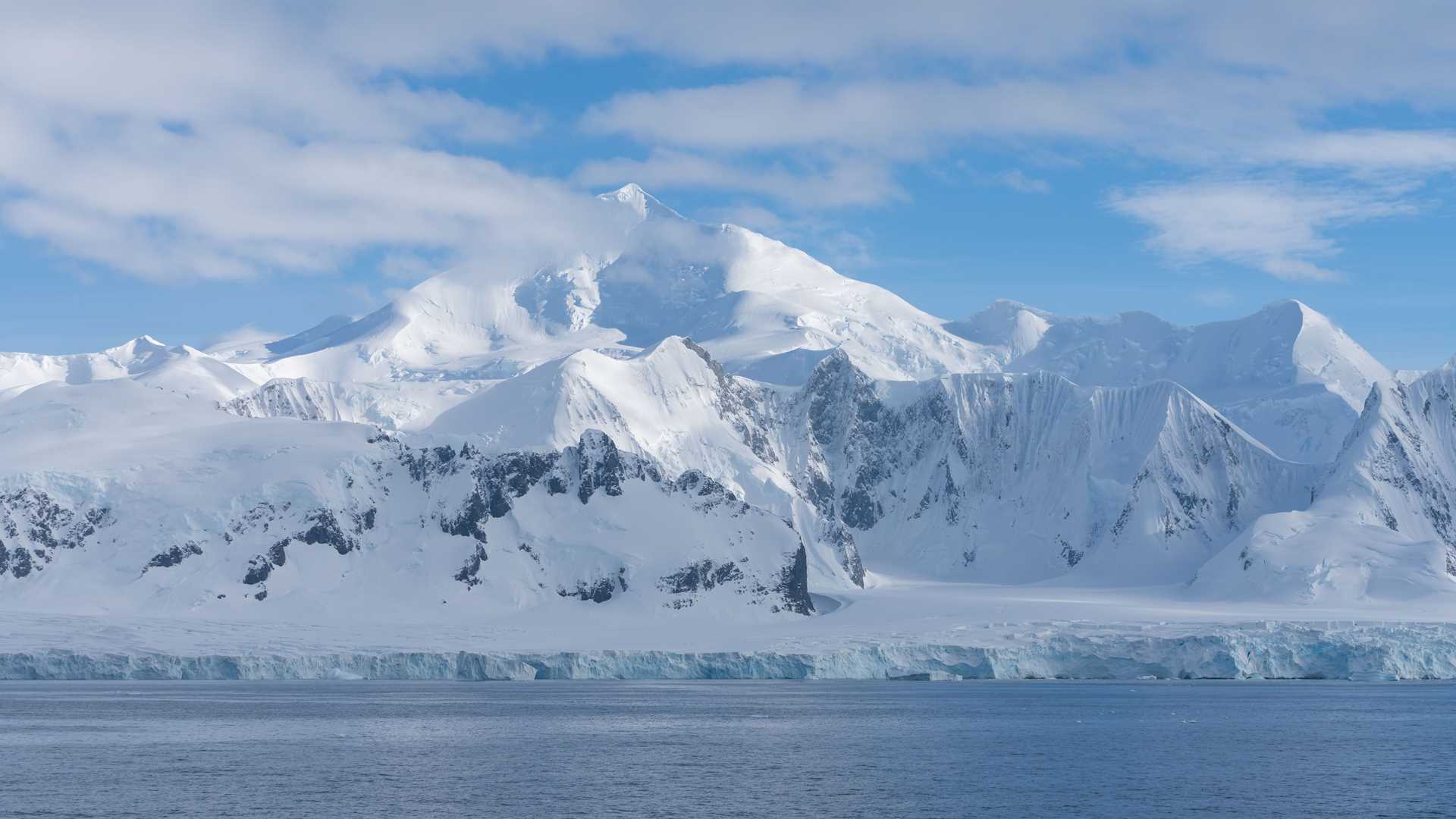Land ho! This morning was our first time spotting land since leaving southern South America. We left the city of Ushuaia in the Tierra Del Fuego province of Argentina and have been traveling in a straight line for nearly 800 nautical miles. While most of the guests, crew, and staff were asleep last night, we crossed the Antarctic Circle. We have spent the entire day around 67.5 degrees south of the equator. For most of us, including me, this will be the farthest point south we have ever been. For those of us who love geography, exploring, and maps, it is truly a remarkable experience to be this far from the equator on such a glorious day.
As we rounded the southern tip of Adelie Island, the clouds parted to reveal immense and magnificent mountains. It was a truly breathtaking introduction to Antarctica. Shortly thereafter, we saw the distant blows of humpback whales. The captain brought the ship a bit closer, and we were soon surrounded by over 20 humpback whales. Eventually, it was time for an early lunch. We reached our destination for the afternoon, a protected area on the southwest side of Pourquoi Pas Island called Dalgliesh Bay.
Located off the west coast of Graham Land, Pourquoi Pas Island is very mountainous. The island was given its name (which roughly translates to “Why not?”) by the 1908 French Antarctic Expedition led by Jean-Baptiste Charcot. That expedition sailed on a vessel that carried the same name. The three-masted barque was designed for polar exploration, and it was equipped with a motor and contained three laboratories and a library. Tragically, this was also the vessel that ended the life of legendary polar explorer John Baptiste Charcot in 1936 when the ship was wrecked along the coast of Iceland. Of the 40 men on the ship, only one survived.
Here in Dalgliesh Bay, we explored by way of Zodiac and had many spectacular encounters with wildlife. A short list of what we observed includes a pair of minke whales, many humpback whales, about 30 crabeater seals hauled out on icebergs, Antarctic terns, and even a leopard seal. We enjoyed blue skies, nearly zero wind, and warm sunshine. Today was a truly epic start to our multiweek expedition exploring Antarctica, South Georgia, and the Falkland Islands.
During dinner, the bridge team of National Geographic Explorer repositioned us to base our post-dinner operations at nearby Horseshoe Island. The island measures about seven by three miles, and it is located at the north entrance to Square Bay.
One of the main intact cultural features of Horseshoe Island is Station Y, an inactive but relatively unmodified and fairly well-equipped British research station from the late 1950s. Of more modern cultural interest, the Turkish Polar Research Program opened temporary facilities on Horseshoe Island in 2018, including a weather monitoring station and a camp.
Expedition leader Lucho planned a lovely after-dinner landing, and we were able to roam around the island and observe fur seals, some Adelie penguins, and, of course, the remains of Station Y. We all made it back to the ship just after sunset at around 10:00 p.m. It was quite an eventful and most wonderful first day here in Antarctica.







